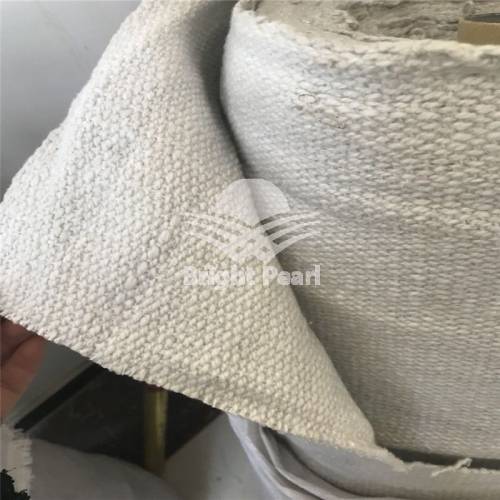- +86 318 5261 900 / +86 318 5261 902 / +86 318 5261 906
- info@cn-sealings.com
Ceramic materials have the advantages of high melting point, high hardness, high wear resistance, oxidation resistance, etc., together with metal materials and polymer materials, they are called the three major solid materials today. Ceramic materials are classified into structural ceramics and functional ceramics according to the nature and field of application. Structural ceramics: Structural ceramics have the advantages of high temperature resistance, good chemical stability, resistance to corrosion, high strength, high hardness, and good thermal conductivity. According to its components, structural ceramics are divided into three categories: oxide ceramics, non-oxide ceramics, and ceramic matrix composite materials; functional ceramics: functional ceramics are materials that utilize their non-mechanical properties. Functional ceramics have many applications in biotechnology, aerospace, energy development and other fields.
As an important class of ceramic materials, Ceramic Fibers have received extensive attention from many researchers. Ceramic fibers can effectively prevent the shortcomings of ceramic crack propagation when subjected to stress. Combining ceramic fibers and matrix to prepare fiber-reinforced ceramic matrix composites is an effective way to improve the toughness of ceramics. Continuous ceramic fibers are an important part of fiber-reinforced ceramic matrix composites. Class, its high toughness and high strength have attracted wide attention from all over the world.
Ceramic fiber is a kind of refractory material with light weight and fibrous appearance. Its fiber length is 100-250mm and its fiber diameter is 2-5μm. Ceramic fiber products have the advantages of light weight, high temperature resistance, low heat capacity, good heat preservation and high temperature insulation performance, etc., so they are widely used in aviation, petrochemical and other fields. There are many types of ceramic fibers, which can be divided into crystalline fibers and glass fibers according to their microstructure. Among them, SiO2 and Al2O3 are typical representatives of glass fibers; ceramic fibers can be divided into oxide fibers and non-oxide fibers according to their chemical composition. Among them, SiC and Si3N4 are representatives of non-oxide fibers; ceramic fibers can be divided into three categories according to the temperature of use: low-grade ceramic fibers, medium-grade ceramic fibers, and high-grade ceramic fibers.

Ceramic Fiber Cloth
Thermal insulation material: Ceramic Fiber Cloth has good high temperature resistance characteristics, which can withstand high temperature of 1500 ℃; ceramic fiber also has a good heat insulation function, which is mainly determined by the mixed structure of ceramic fiber (that is, solid fiber and air). Therefore, ceramic fiber can solve the problem of poor toughness of refractory materials. The thermal insulation performance of ceramic fiber makes ceramic fiber products widely used in industrial furnace walls and building materials.
High-temperature filter material: The ceramic fiber has a large specific surface area, and the filter material prepared from it has high filtration purity. The ceramic fiber also shows more excellent performance in thermal stability, chemical stability and thermal shock resistance. Therefore, ceramic fibers are widely used in environmental fields, such as air purification, sewage treatment, and flue gas filtration.
Sound-absorbing and sound-insulating materials: Ceramic fiber materials have good sound-absorbing and sound-insulating effects, mainly due to the viscous effect between the sound waves and the air in the fiber pores when the sound waves are transmitted inside the material, and the sound waves will also generate frictional resistance between the fibers Therefore, part of the sound energy lost is converted into heat energy. In addition, the air in the fiber pores undergoes heat conduction when compressed, and the heat conduction will also cause acoustic energy loss, thereby absorbing the incoming sound waves. Therefore, ceramic fiber materials have good sound absorption and sound insulation effects, making them widely used in construction, transportation and other fields.
Catalyst carrier material: ceramic fiber has the advantages of large specific surface area, high porosity, good catalytic effect, etc. When the ceramic fiber supporting catalyst is used in the controlled diffusion reaction, it will get a good catalytic effect due to its low diffusion resistance, so ceramic fiber As a catalyst, it has great application potential in the field of catalysis.
Reinforced and toughened materials: The disadvantages of poor toughness of ceramic materials are well known, so Ceramic Fiber Textiles are the most effective way to toughen ceramic materials. Ceramic fibers that are widely used include: Al2O3 long fibers, SiC long fibers and so on. At the same time, ceramic fiber can also be used in toughening metal materials. New functional materials: ceramic fiber has many advantages, so it is widely used in new high-temperature superconducting materials, new functional materials, such as far-infrared fiber, conductive fiber, etc.


